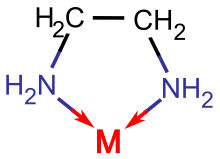Preparing your Own Chelates – Improving Your Hydroponic Nutrients
If you have already read my free ebook for preparing hydroponic solutions and you have already seen many commercial and other standard formulations you may be asking yourself if you will have problems with iron due to the unavailability of any chelating agents. The truth is that I have used formulations without any chelating agents several times and I haven’t had any problems when they are prepared by the ebook. However many of you may be interested in the addition of chelating agents and you may wondering how you may modify the spreadsheet or what you should add in order to generate the adequate chelates. On this post I want to explain a little bit how you can add chelating agents to your reservoir to chelate the salts mentioned on my ebook and how this can easily generate all the chelated metal complexes you need to avoid any solubility problems.

What is exactly a chelate and what are they good for ? A chelate is simply an organic molecule that “wraps” itself around a metal ion and prevents its precipitation, increasing its solubility. Chelates also diminish the amount of available metal ions to plants and therefore they slowly release the quantities of micro nutrients available for plant growth. There are many available pre-made chelates on the market such as Fe-EDTA. However, the cheapest way to generate chelates once you already have a standarized formulation based on simple inorganic salts is to add a chelating agent.
The most common of these agents is called Ethylendiamintetraacetic Acid (EDTA), a tetraprotic acid which is able to chelate most metals with a particularly high afinity for Fe. However, when you add only chelated iron, the fact that other metals start to compete makes the iron complex destabilize and the chelate is eventually destroyed. However, when we add the chelating agent we can make sure that we add enough to “wrap” Fe and other metals in such a way that the stability of the iron complex is guaranteed.
When we add the chelating agent we do not add EDTA (the acidic form) but we add it as a salt of another element, usually K-EDTA. Once this is added to the solution the EDTA quickly gets rid of K and goes for another metal – such as Fe – for which it has a much higher affinity. The chelating agent quickly forms complexes with all the metals it loves and you end up with a solution that is highly stable and not prone to any micro nutrient related precipitation. How much do you need to add ? Depends on your formulation. The spreadsheet download with the ebook shows the amount of chelating agent (K-EDTA) you need to add to the END solution after all micro nutrient concentrated solution additions have been done (this amount fully complexes Fe, Mn, Zn and Cu).